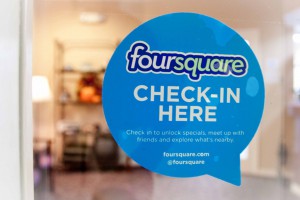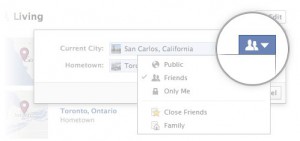The use of Social Networks has increased exponentially over recent years (mainly Facebook, Instagram and Twitter), so much so that the they are now part of our everyday lives. Last year alone the number of active users on social channels increased by 219 million (+ 10%).
However, if technology is not used appropriately it can bring with it negative consequences. This blog will show how an inappropriate use of social networks can become a risk for one’s own security.
Who has never shared a few photos of a holiday abroad with their network of friends? Social networks lend themselves perfectly to this kind of use. But, beware of your privacy! Let us be clear, this is not merely with regard to information concerning the privacy of individuals, but also, and above all, in terms of confidentiality and the potential risky nature of the information we transmit.
![]()
Finding detailed information about specific people, especially thanks to the Internet, is child’s play these days, and this is not always best for one’s own confidentiality. The risk (which is often our own fault, by putting our data for all to see on the Internet) is to reveal private information without being aware of the consequences that this gesture, seemingly harmless, may result in. Unfortunately, even professional thieves use these precious technological channels to obtain news about their “targets”. There are many online tools available and, in addition to social networks, other services (which are extremely useful when used for private or commercial purposes) can be exploited by crooks, such as Google Streetview. By using this, a thief can study the outside layout of the houses, the street and the neighbourhood, so as to prepare their “hits”.
Other information which can be useful for malicious purposes can be derived from our social profiles when:
- we share photos of our possessions and of our house. By making images public which show part of our homes or even some of our possessions we involuntarily help potential thieves. In fact, by doing so, you are running the risk of providing the potential thieves with the layout of rooms, the types of “barriers” which they might face (e.g. the photos might clearly show the type of doors / railings used, the presence of alarm sensors etc.) and photos of items which might be of interest to them. In cases such as these, the thieves who want to pull off a robbery would actually know which valuables to steal and where to find them;
- we register through the check-in tool (on Facebook, Foursquare or Instagram) at a particular location. For example: “John Brown was registered at such a place, Italy”, the post privacy: public (image). By using the phone’s GPS it is possible to locate one’s exact location, with a margin of error of less than 100 metres. A potential thief can, simply by checking the public social profile, get an idea of where someone is and, consequently, establish one’s schedules or habits. In our example, if John Brown is recorded “in the gym” every Monday evening, to let his friends know that is sporty, he may actually be out every Monday evening, and therefore, in the eyes of a thief, this is the “right” time to make a “visit” to his home;

- we publish a status in which we declare that we are away from home. Possibly for a holiday or work, even for a lengthy period. If we specify the exact dates of our absence, we put our security at even more risk.
What precautions should be taken to avoid running into any unpleasant surprises when we return home?
The purpose of this article is not to encourage you to stop using social networks, but to become more knowledgeable in their use. The most helpful advice that we can offer is to always pay close attention to the privacy settings, so as not to make public information which could in any way help thieves in their “work.”

As we always say, possessing the best protection (whether it is electronic or mechanical) to protect or possessions is crucial.
However, at the same time, it is best to avoid being subjected to greater risks, which can sometimes be a simple action, like publishing a blog!

